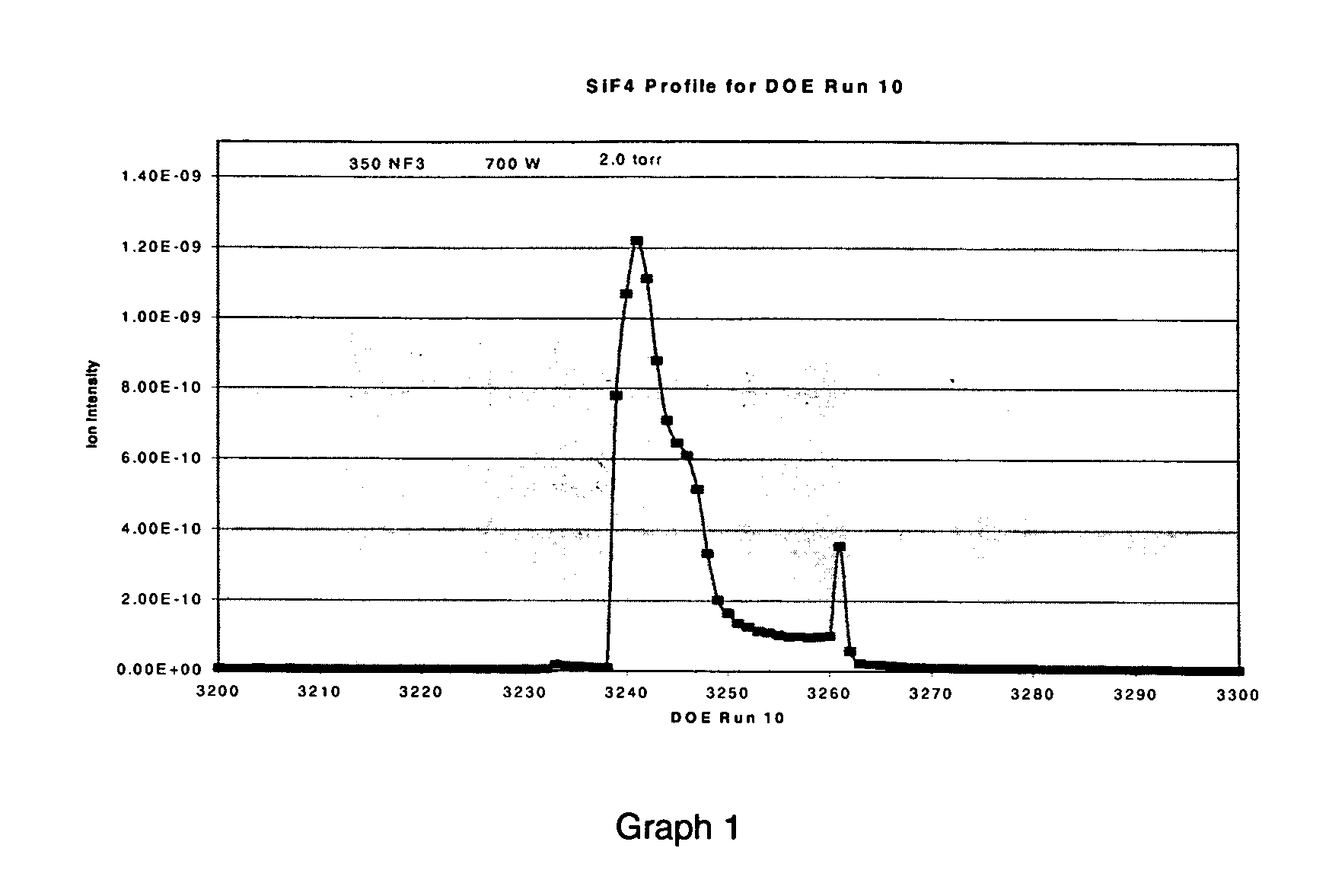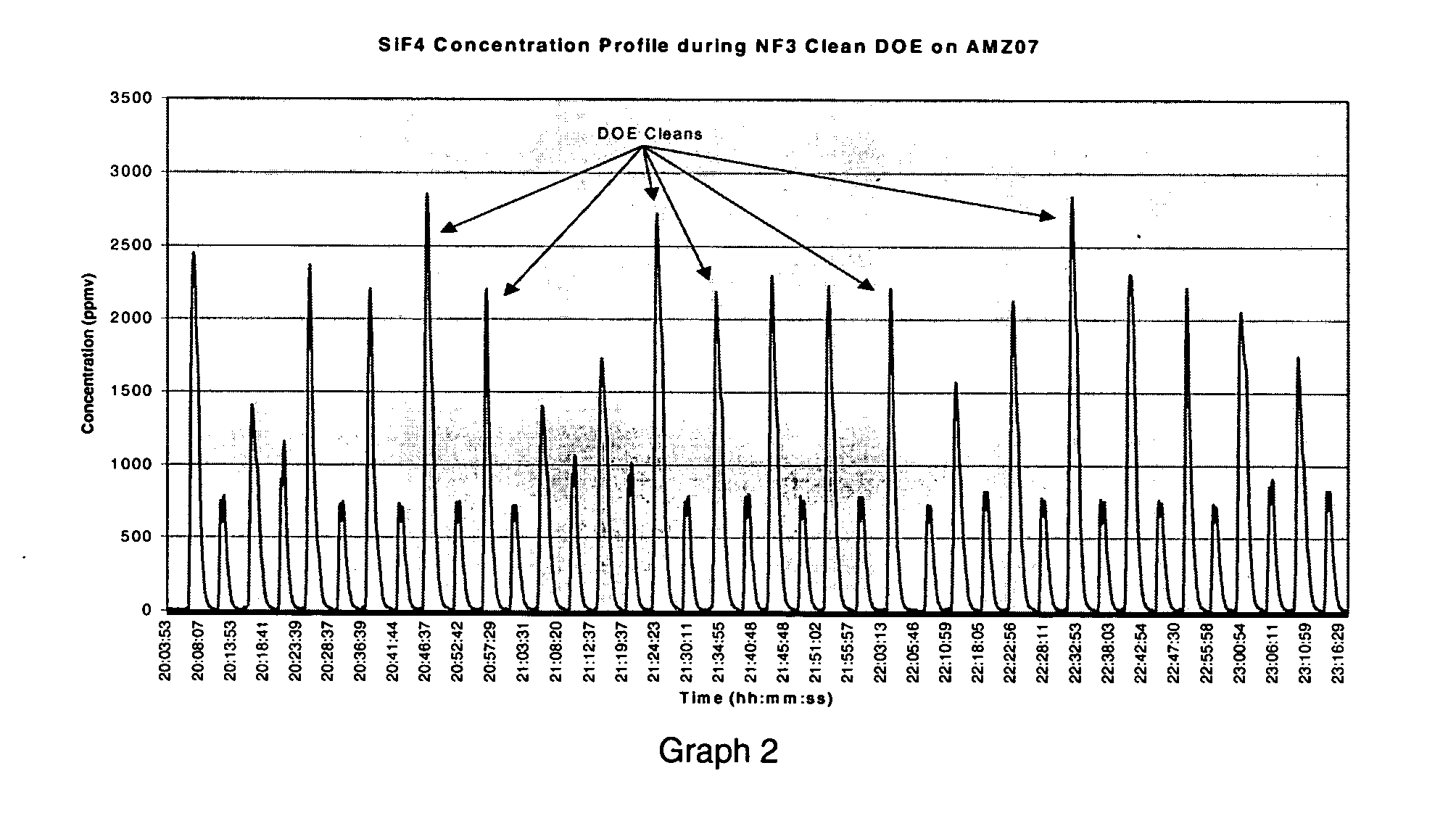Low temperature CVD chamber cleaning using dilute NF3
a technology of cvd chamber and dilute nf3, which is applied in the field of low temperature cvd chamber cleaning using dilute nf3, can solve problems such as defects in electronic product components, and achieve the effect of reducing the cool down period of susceptors and cleaning at lower plasma energies
- Summary
- Abstract
- Description
- Claims
- Application Information
AI Technical Summary
Benefits of technology
Problems solved by technology
Method used
Image
Examples
example i
[0030] In this example susceptor temperature rise, clean time and integrated SiF4 emissions associated with the standard clean chemistry are compared to an optimized a dilute NF3 / helium cleaning chemistry. Experimental design methods were used to model responses for susceptor temperature rise, cleaning time to end point and integrated SiF4 emissions as a function of plasma power, pressure and PFC flow rates. The models were created by imputing data into a commercially available statistical software. A central composite response surface model was created. Three center point replicates were run for each model. For each DOE run the chamber clean was timed at 45 sec. The film thickness deposited on the wafer was 3000 Angstroms for each run. Between each DOE run a 30 sec. chamber clean was run using the standard recipe to ensure that residual film was removed prior to the subsequent DOE run.
[0031] Data supporting models were acquired in the following manner. The susceptor temperature wa...
example 2
Comparison Of Model Simulated Conditions For Optimized Dilute NF3 Based Chemistry Relative to Optimized Standard Chemistry
[0041] In this example susceptor temperature rise, clean time and integrated SiF4 emissions associated with the optimized standard clean chemistry are compared to an optimized dilute NF3 cleaning chemistry. Experimental design methods were used to model responses for susceptor temperature rise, cleaning time to end point and integrated SiF4 emissions as a function of plasma power, pressure and PFC flow rates. The models were created by imputing data into a commercially available statistical software. A central composite response surface model was created. Three center point replicates were run for each model. For each DOE run the chamber clean was timed at 45 sec. Between each DOE run a 30 sec. chamber clean was run using the standard recipe to ensure that residual film was removed prior to the subsequent DOE run.
[0042] Data supporting models were acquired in t...
PUM
| Property | Measurement | Unit |
|---|---|---|
| susceptor temperature | aaaaa | aaaaa |
| susceptor temperature | aaaaa | aaaaa |
| temperatures | aaaaa | aaaaa |
Abstract
Description
Claims
Application Information
 Login to View More
Login to View More - R&D
- Intellectual Property
- Life Sciences
- Materials
- Tech Scout
- Unparalleled Data Quality
- Higher Quality Content
- 60% Fewer Hallucinations
Browse by: Latest US Patents, China's latest patents, Technical Efficacy Thesaurus, Application Domain, Technology Topic, Popular Technical Reports.
© 2025 PatSnap. All rights reserved.Legal|Privacy policy|Modern Slavery Act Transparency Statement|Sitemap|About US| Contact US: help@patsnap.com


